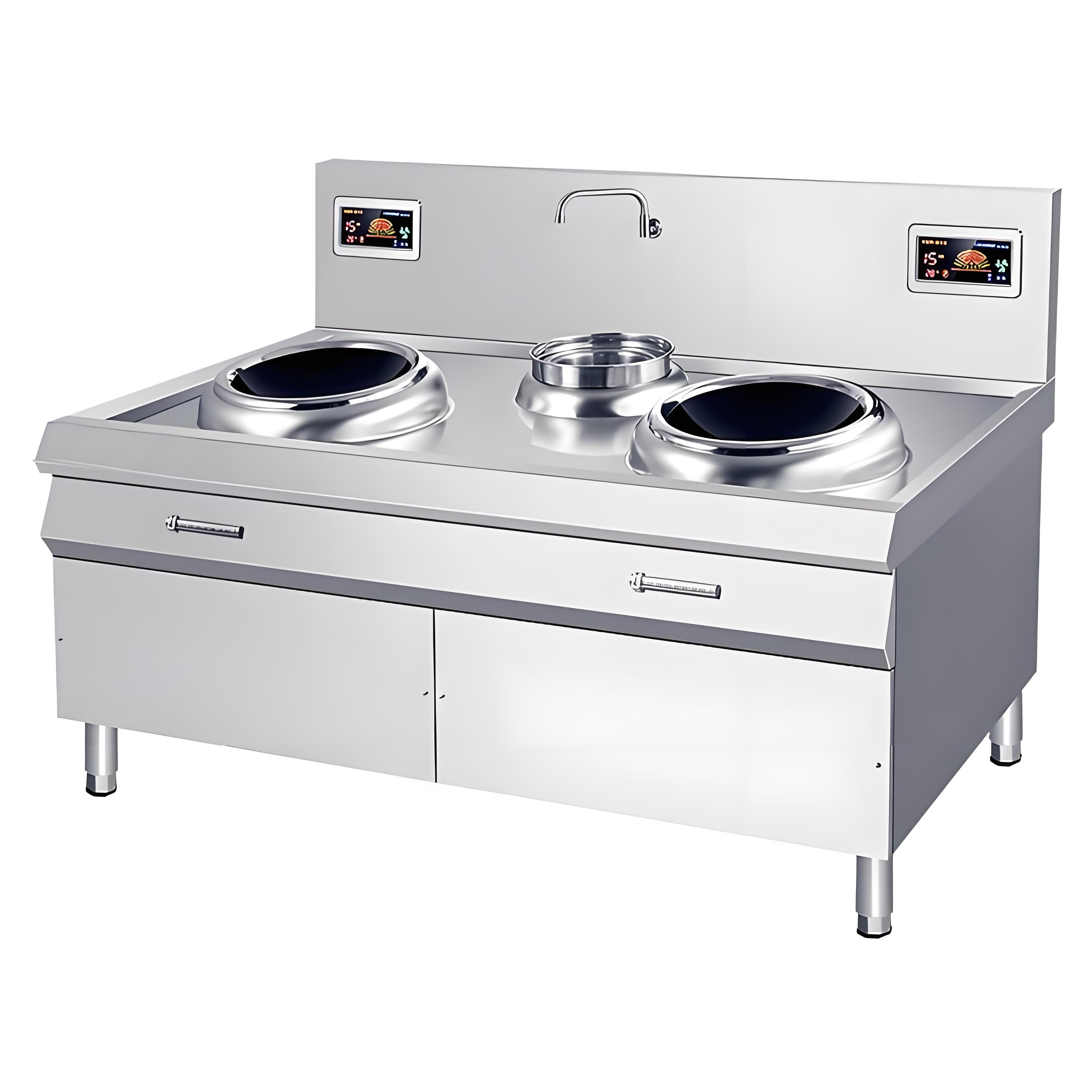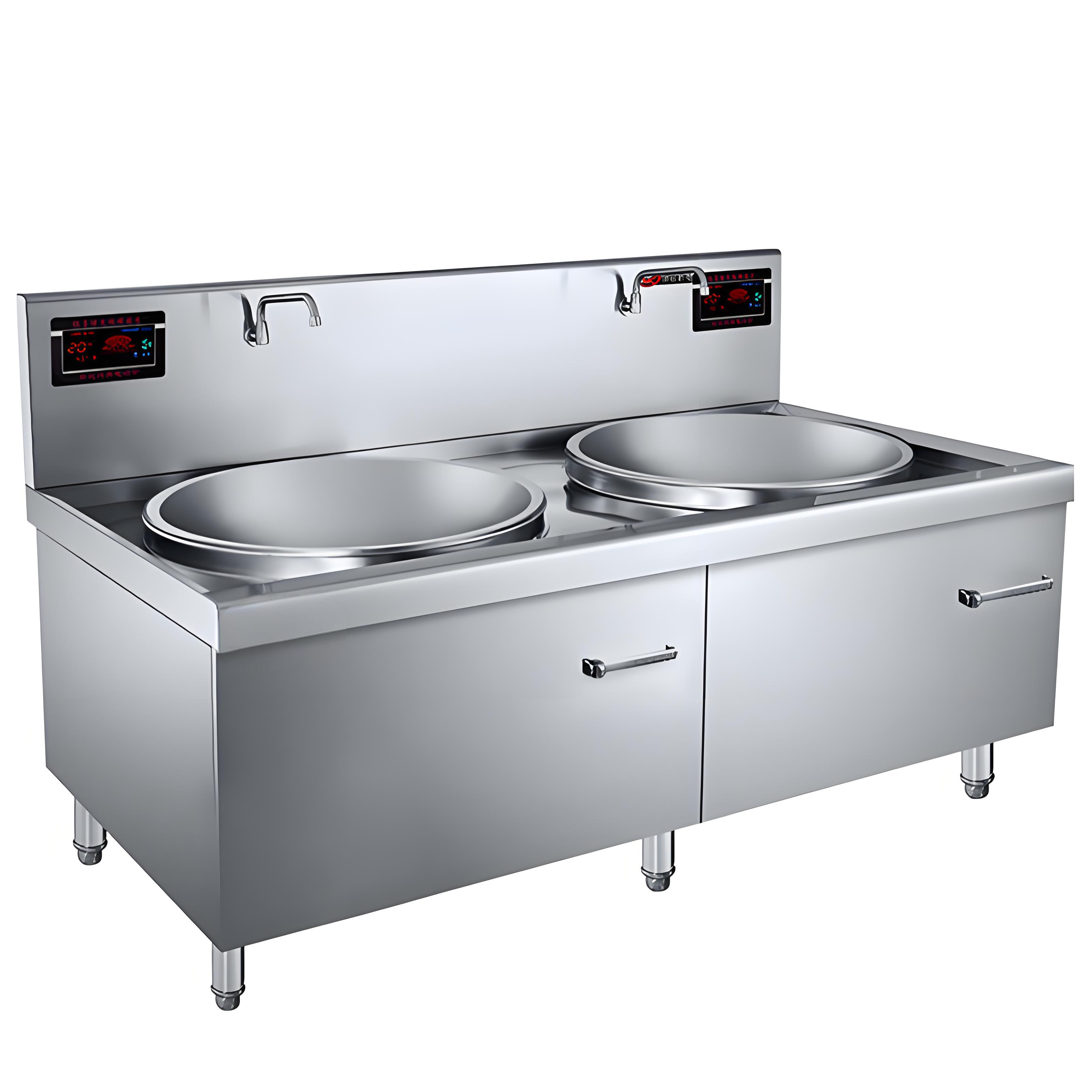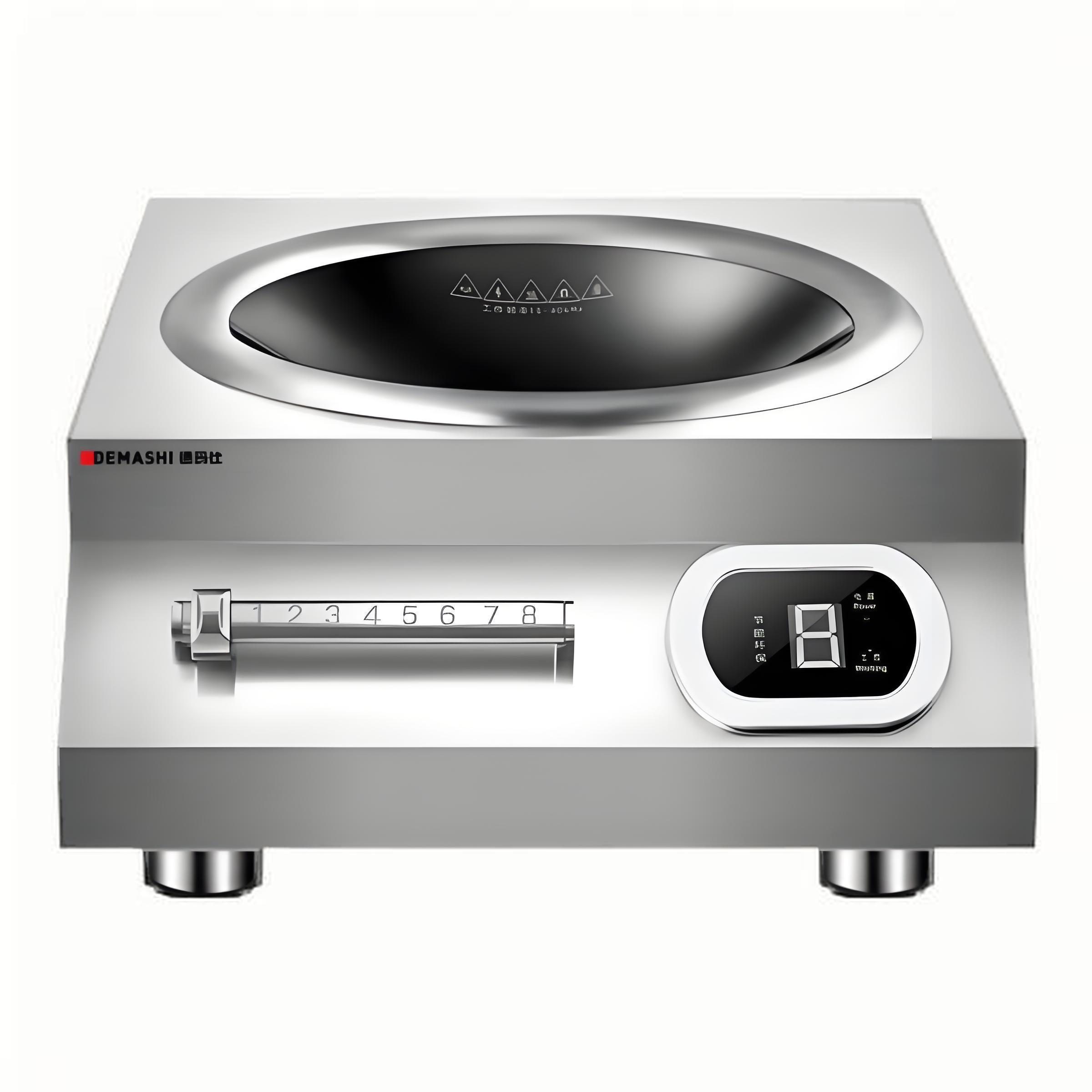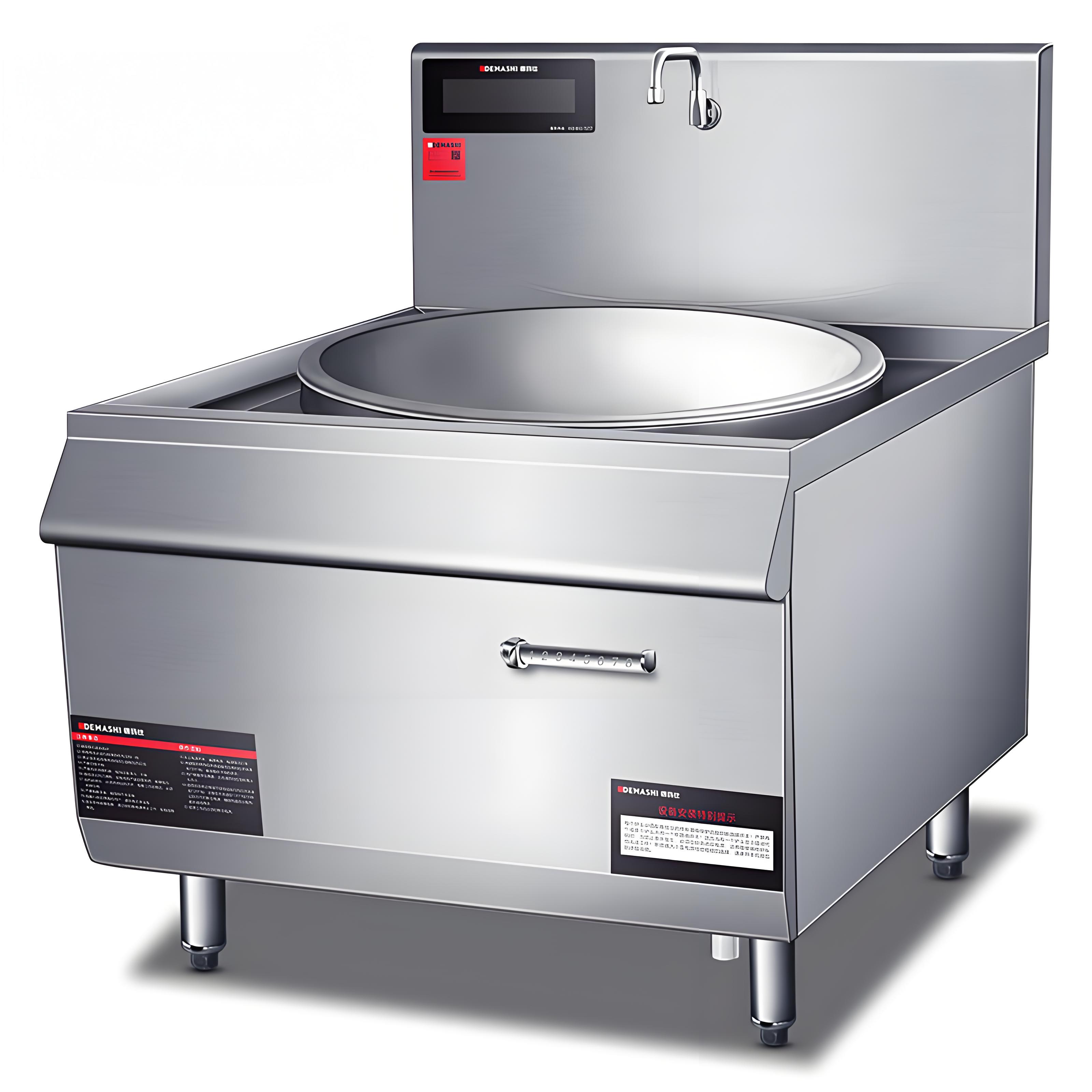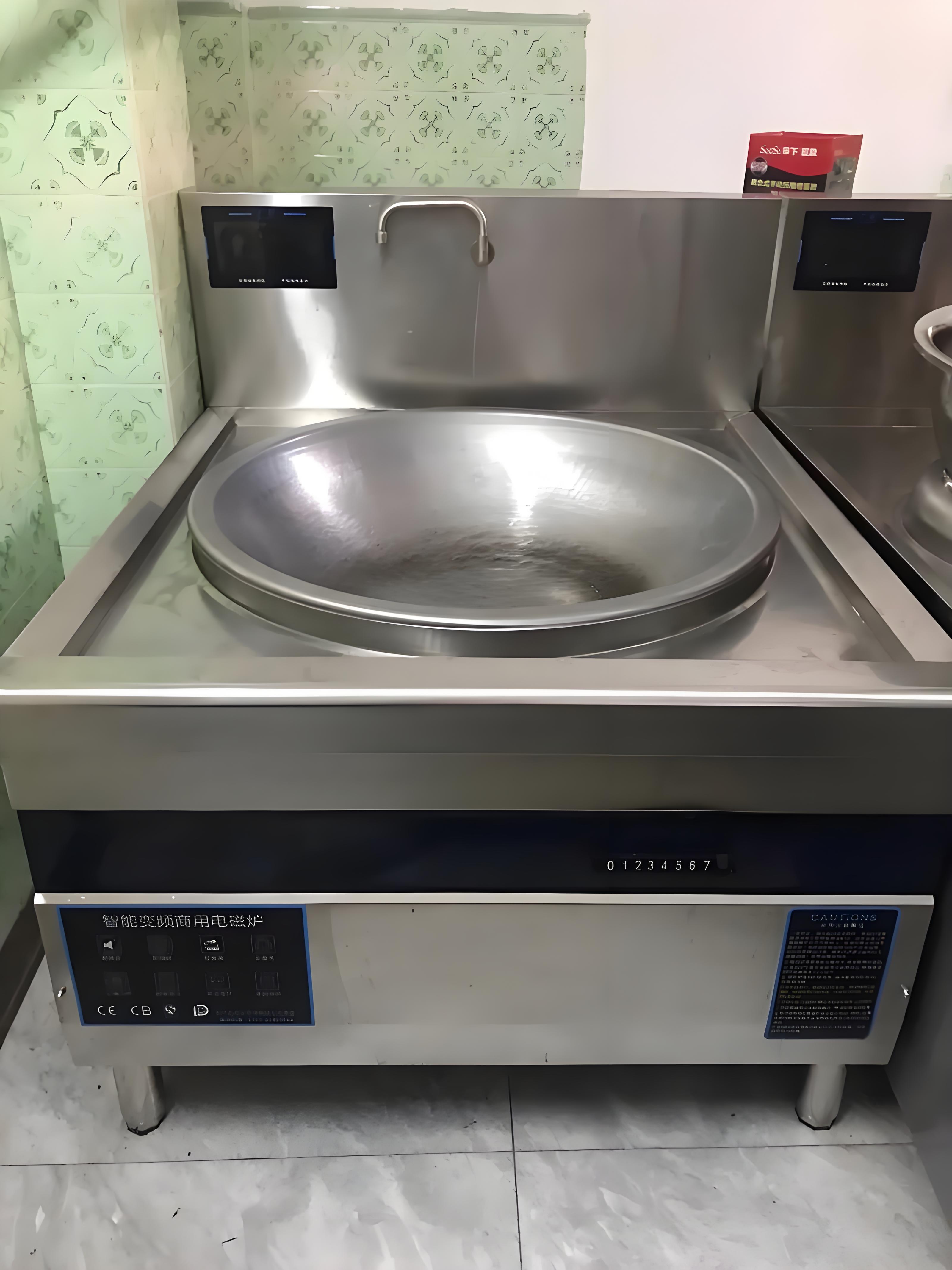Having spent over a decade in the commercial kitchen equipment industry, I’ve witnessed firsthand how cooking technology shapes the way restaurants, hotels, and catering businesses operate. One question I hear often from chefs and kitchen managers is whether high-power induction cooktops are truly gaining traction in professional kitchens. The short answer? Yes, they’re becoming a cornerstone in many commercial setups, but their popularity comes with nuances that depend on the kitchen’s needs, budget, and workflow. Let me walk you through why these powerful machines are making waves, which models are leading the charge, and what you need to know to decide if they’re right for your operation.
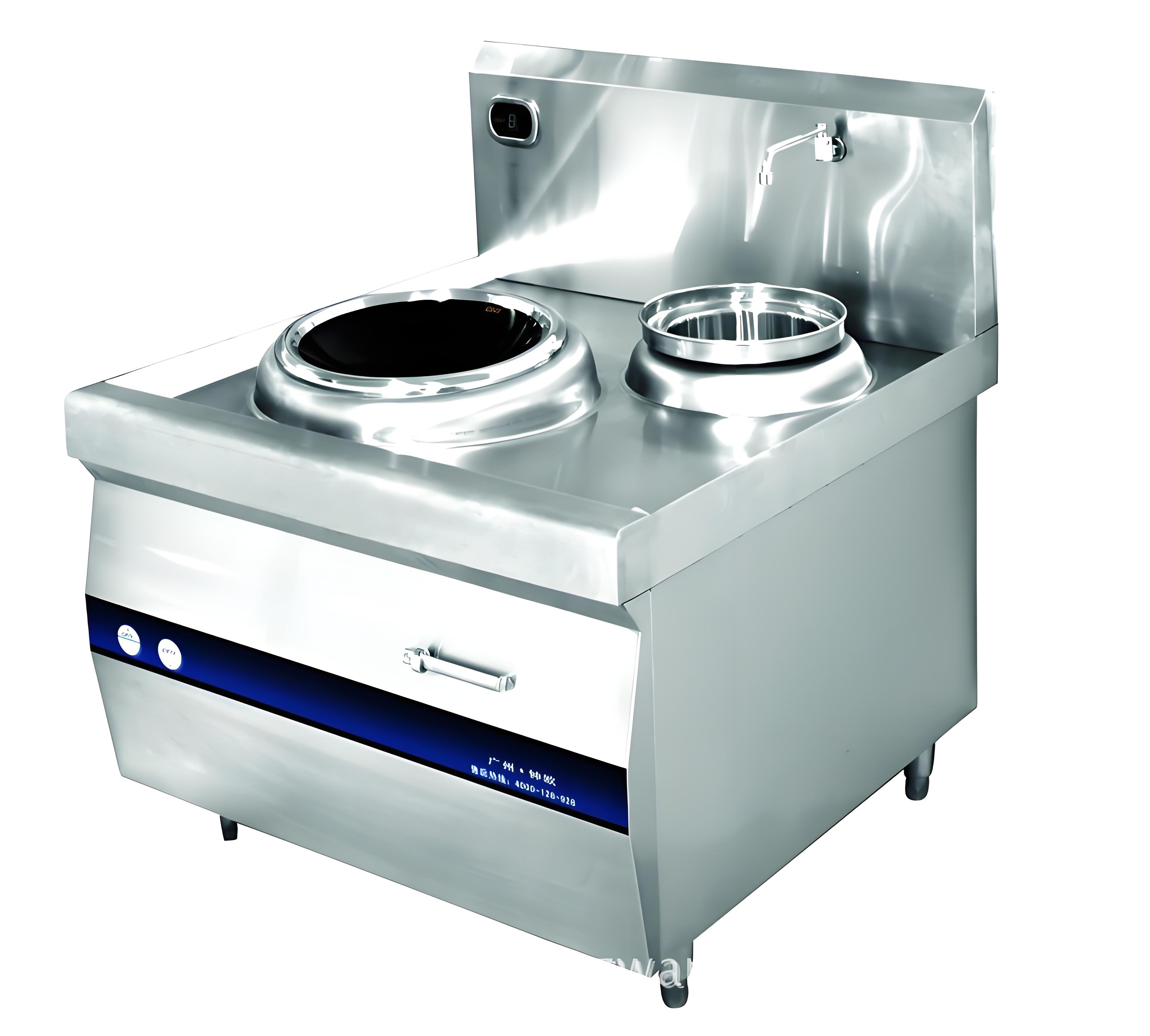
The Rise of Induction in Professional Kitchens
When I started in this industry, gas ranges dominated commercial kitchens. They were reliable, familiar, and gave chefs that tactile control they loved. But over the years, I’ve seen a shift. High-power induction cooktops—typically those with 3000W or more—are now a go-to for many pros. Why? They combine speed, precision, and efficiency in ways that traditional gas or electric stoves struggle to match. In a busy kitchen, where every second counts, these cooktops can boil water in minutes, sear meats with pinpoint accuracy, and cool down instantly, reducing the risk of burns.
I remember visiting a high-end restaurant in San Francisco a few years back. The head chef showed me their new high-power induction setup and couldn’t stop raving about how it cut their prep time for sauces and stocks by nearly 30%. That kind of efficiency isn’t just a luxury—it’s a game-changer in a high-pressure environment. But are these cooktops universally popular, or is their rise limited to certain types of kitchens? Let’s break it down.
Why High-Power Induction Cooktops Are Gaining Popularity
High-power induction cooktops are designed for heavy-duty tasks, making them ideal for kitchens that demand speed and consistency. Here are the key reasons they’re becoming a staple:
Unmatched Speed and Power
With 3000–5000W of power, these cooktops can heat up faster than even the best gas burners. For example, a 3500W induction cooktop can bring a gallon of water to a boil in under four minutes, compared to six or more on a gas range. In my experience, this speed is a lifesaver in high-volume settings like banquet halls or fast-casual chains, where turnaround time is critical.
Precision Cooking
Induction technology allows for exact temperature control, which is a huge draw for chefs who need consistent results. Whether you’re tempering chocolate or simmering a delicate reduction, models like the CookTek SinAqua let you dial in temperatures to the degree. I’ve seen pastry chefs switch to induction just for this reason—it’s like having a lab-grade hot plate in the kitchen.
Energy Efficiency and Cost Savings
Running a commercial kitchen is expensive, and energy costs add up fast. Induction cooktops are 30–50% more energy-efficient than gas or electric alternatives because they heat the cookware directly, not the surrounding air. One catering company I worked with reported a noticeable drop in their utility bills after switching to high-power induction units. Over time, those savings can offset the higher upfront cost.

Safety and Cleanliness
Kitchens are chaotic, and safety is non-negotiable. Induction cooktops stay cool to the touch unless cookware is present, reducing burn risks. They’re also easier to clean than gas burners, with their smooth ceramic glass surfaces. I’ve watched kitchen staff wipe down an induction cooktop in seconds after a busy service—something you can’t do with greasy gas grates.
Space-Saving Design
Many high-power induction cooktops are compact and portable, which is a big plus for food trucks, pop-up events, or kitchens with limited space. Even powerful models like the Vollrath HPI4-3800 don’t take up much counter space, making them versatile for various setups.
Top High-Power Induction Cooktops in Commercial Kitchens
To give you a clearer picture, let’s look at some of the high-power induction cooktops that are currently dominating the industry. These models have earned their reputation through performance, durability, and rave reviews from kitchen pros.
1. CookTek SinAqua
The CookTek SinAqua is a powerhouse at 5000W, designed for kitchens that need to handle large-scale cooking. I’ve seen it used in hotel kitchens where chefs are preparing for 200-person banquets. Its waterless induction technology eliminates the need for water cooling, which simplifies maintenance and boosts reliability. The digital control panel is user-friendly, and the heavy-duty ceramic glass can withstand constant use.
2. Vollrath HPI4-3800
The Vollrath HPI4-3800 delivers 3800W of power and is a favorite for its balance of performance and practicality. It’s built with a stainless steel frame that holds up to spills and heavy pots. One chef I know uses it for everything from stir-frying to braising, thanks to its 18 power settings and temperature memory function. It’s also relatively compact, making it a great fit for mid-sized restaurants.
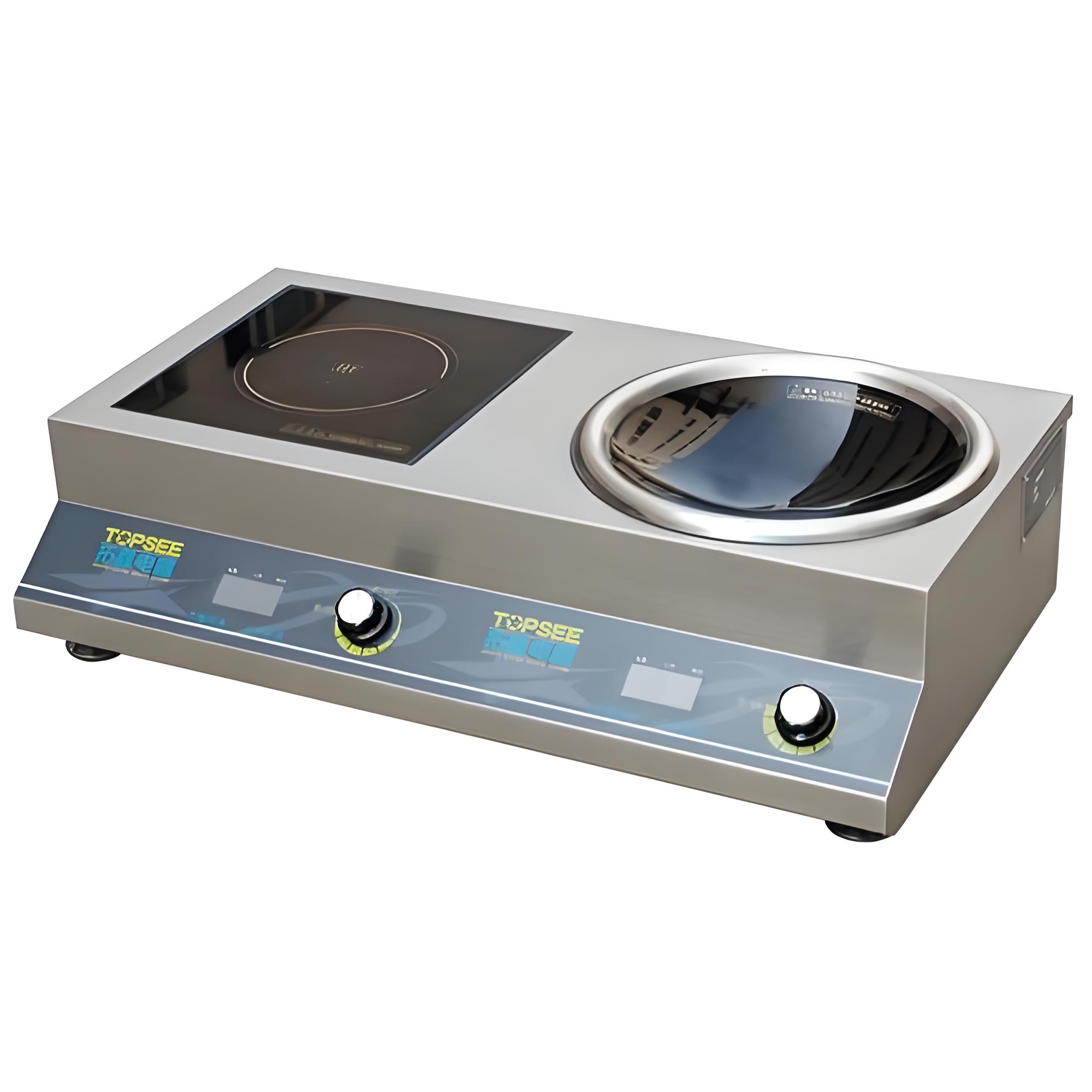
3. Hatco IRNG-PC1-36
The Hatco IRNG-PC1-36 pushes 3600W and is known for its robust build and precise temperature control. It’s a popular choice in fine-dining kitchens where consistency is everything. The dual-zone cooking surface lets you use two pans at different temperatures, which is perfect for multitasking during a dinner rush.
4. Garland Induction RTCSmp
The Garland Induction RTCSmp offers 3500W and stands out for its real-time temperature control system, which adjusts power instantly to maintain steady heat. I’ve seen this model in action at a high-volume Asian restaurant, where it handled constant wok cooking without breaking a sweat. Its reinforced ceramic top is built to last, even under intense use.
Comparison Table of High-Power Induction Cooktops
Here’s a quick comparison of these top models to help you see their strengths at a glance:
|
Model |
Power (Watts) |
Key Features |
Best For |
|---|---|---|---|
|
CookTek SinAqua |
5000 |
Waterless tech, digital controls, durable |
Large-scale catering, hotels |
|
Vollrath HPI4-3800 |
3800 |
18 power settings, temperature memory |
Mid-sized restaurants |
|
Hatco IRNG-PC1-36 |
3600 |
Dual-zone cooking, precise control |
Fine-dining kitchens |
|
Garland Induction RTCSmp |
3500 |
Real-time temperature control, robust build |
High-volume wok cooking |
This table highlights the diversity of options, but choosing the right one depends on your kitchen’s specific demands.
Are High-Power Induction Cooktops Right for Every Kitchen?
While high-power induction cooktops are incredibly popular, they’re not a one-size-fits-all solution. Here’s how to decide if they’re right for you:
When They’re a Perfect Fit
High-Volume Kitchens: If you’re running a hotel, banquet hall, or busy restaurant, the speed and power of units like the CookTek SinAqua are hard to beat.
Precision Cooking Needs: Fine-dining or pastry kitchens benefit from the exact temperature control, as seen with the Hatco IRNG-PC1-36.
Space-Constrained Setups: Compact models like the Vollrath HPI4-3800 are ideal for food trucks or small bistros.
Energy-Conscious Operations: If cutting utility costs is a priority, induction’s efficiency is a major draw.
When You Might Hesitate
Budget Constraints: High-power induction cooktops are pricier than gas or lower-wattage models. If you’re a startup or small café, a 1800W unit might be more practical.
Power Supply Limitations: These cooktops often require 208–240V outlets, which some older kitchens may not have. I once worked with a client who had to upgrade their electrical system to accommodate a 5000W CookTek, which added to the cost.
Staff Training: If your team is used to gas, the switch to induction can take some getting used to. A quick training session can help, but it’s something to plan for.

Real-World Examples of Adoption
I’ve seen high-power induction cooktops transform kitchens in different ways. Take, for example, a catering company I consulted for in New York. They switched to the Garland RTCSmp for their wok stations, and the owner told me it cut their cooking time for stir-fries by nearly half. The precise heat control also meant fewer overcooked dishes, which improved customer satisfaction.
On the flip side, I worked with a small diner that tried a high-power induction unit but found it overkill for their menu of burgers and pancakes. They ended up sticking with a 1800W model that was more budget-friendly and better suited to their needs. These stories show that while high-power units are popular, their fit depends on your operation.
Challenges and Solutions
Adopting high-power induction cooktops comes with a few hurdles, but they’re manageable with the right approach:
Cookware Costs: Induction requires ferromagnetic cookware, which can be an upfront expense. I recommend brands like Vollrath or Matfer Bourgeat for durable, induction-ready pans.
Electrical Requirements: High-power units need robust electrical setups. Before buying, check your kitchen’s voltage and consult an electrician if needed.
Learning Curve: Some chefs resist the switch from gas. I’ve found that hands-on demos and a cheat sheet for the cooktop’s controls can ease the transition.
Maintenance: While induction cooktops are easier to clean, their ceramic glass surfaces can scratch if mishandled. Use soft cloths and avoid abrasive cleaners to keep them in top shape.
The Future of Induction in Commercial Kitchens
Looking ahead, I’m confident that high-power induction cooktops will only grow in popularity. As energy costs rise and sustainability becomes a bigger focus, their efficiency makes them a smart long-term investment. Plus, advancements in technology—like CookTek’s waterless systems or Garland’s real-time temperature control—are making these units even more appealing.
I recently spoke with a kitchen designer who’s seeing more new restaurants opt for full induction lines over gas, especially in urban areas with strict safety regulations. It’s a trend that’s likely to continue as chefs prioritize speed, safety, and precision.
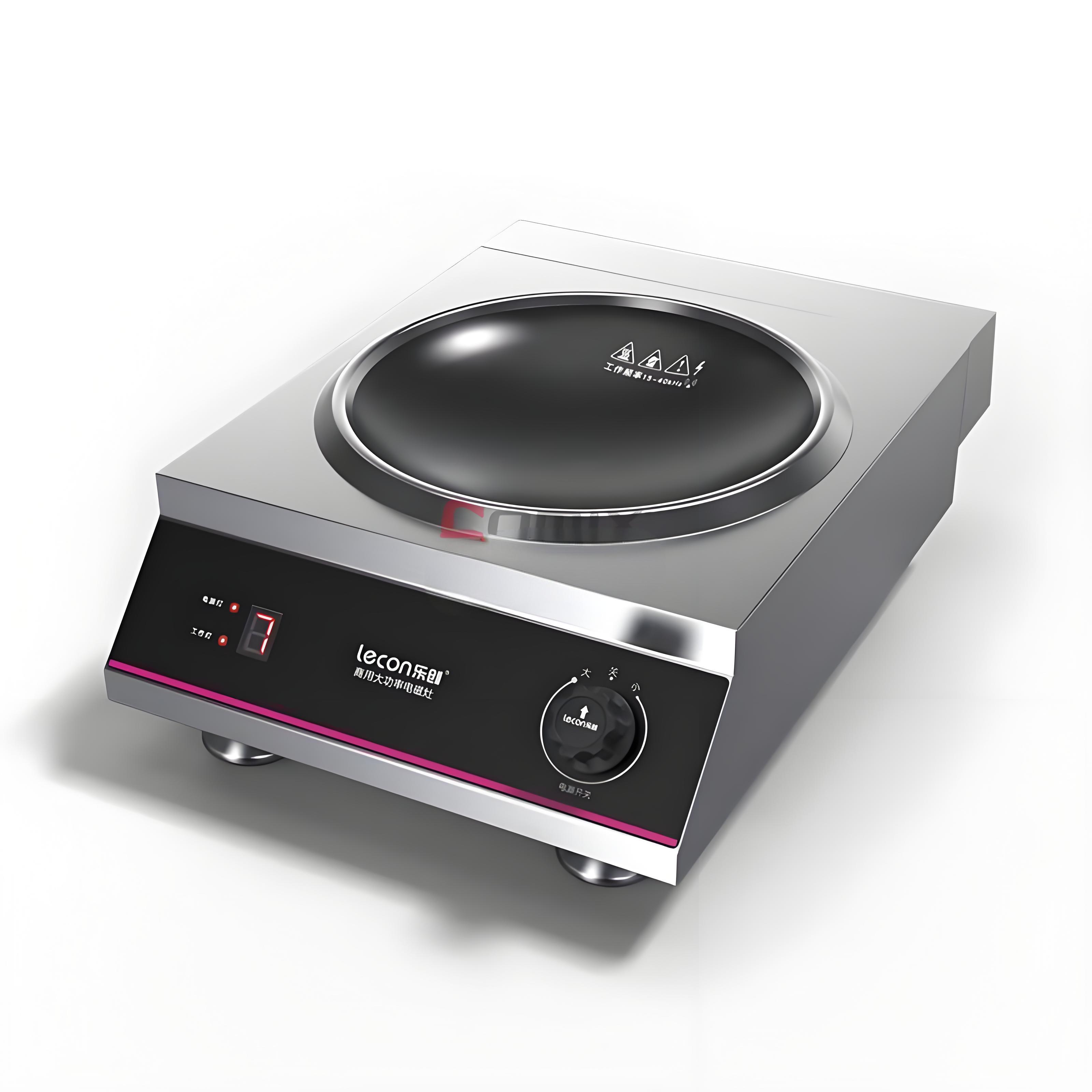
Wrapping Up
High-power induction cooktops are more than just a trend—they’re becoming a standard in commercial kitchens that value efficiency, safety, and consistency. Models like the CookTek SinAqua, Vollrath HPI4-3800, Hatco IRNG-PC1-36, and Garland RTCSmp are leading the pack, each offering unique strengths for different types of operations. Whether you’re running a high-volume hotel kitchen or a boutique bistro, there’s a high-power induction cooktop that can elevate your workflow.
From my years in the industry, I can tell you that investing in the right equipment is about more than just specs—it’s about finding tools that make your team’s life easier and your food better. If you’re considering a high-power induction cooktop, weigh your kitchen’s needs, budget, and electrical setup, and you’ll find a model that’s worth its weight in gold.
Related Questions and Answers
Q: Are high-power induction cooktops more expensive to run than gas?
A: No, they’re typically cheaper due to their energy efficiency. Induction cooktops use less electricity than electric stoves and avoid the fuel costs of gas. However, check your local utility rates to confirm.
Q: Can I use high-power induction cooktops in a food truck?
A: Yes, but you’ll need a reliable power source, like a generator or high-capacity inverter, to handle the 3000W+ load. Compact models like the Vollrath HPI4-3800 are a good fit for mobile setups.
Q: How do I know if my kitchen’s electrical system can support a high-power induction cooktop?
A: Check the cooktop’s voltage requirements (usually 208–240V) and consult an electrician to verify your kitchen’s capacity. You may need to upgrade your outlets or circuit breakers.
Q: Do high-power induction cooktops require special maintenance?
A: They’re low-maintenance compared to gas, but you should clean the ceramic glass surface regularly with a soft cloth and avoid abrasive cleaners. Also, ensure proper ventilation to prevent overheating.
